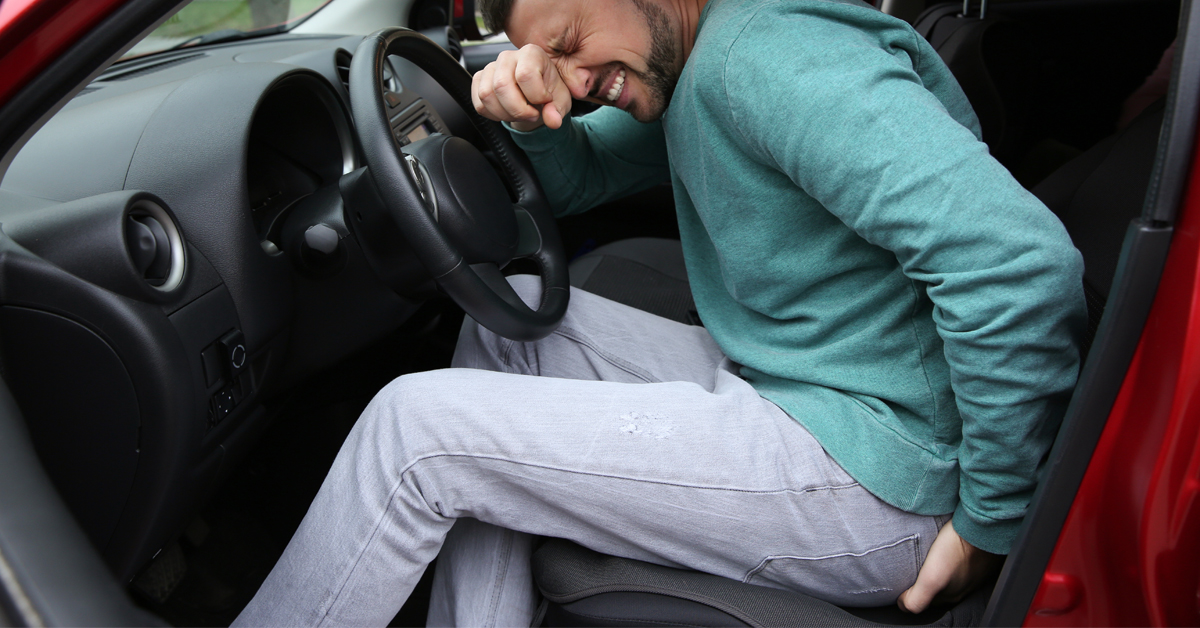What Does Low Back Pain That Radiates Down Both Legs Mean?

If you experience low back pain that radiates down both legs, you know this pain can be debilitating and interfere with completing everyday activities. Back pain that radiates down both legs can occur for several reasons, including:
- Trauma or injury to your lower back or lumbar spine
- Piriformis syndrome: a neuromuscular disorder where the piriformis muscle in the buttocks becomes tight or spasms, irritating your sciatic nerve
- A tumor pressing on your nerves
- Cauda equina syndrome: an uncommon condition that impacts nerves located at the lower end of the spinal cord, causing leg pain and numbness around the anal region
- Sciatica
What is Sciatica?
The sciatic nerve is responsible for movement and sensation in the lower back and lumbar spine. When the sciatic nerve is pinched, compressed, or irritated, it can cause pain, numbness, tingling, or weakness in the lower back, hips, buttocks, and legs. Low back pain radiating down the legs is often called “sciatica.”
Typically, sciatica affects one leg at a time, but the condition can occur in both legs. When sciatica affects both legs, it’s usually because there is nerve pressure in multiple areas of the spinal cord.
This pain can be severe and debilitating and can result in the following:
- Limited mobility, including the capacity to sit comfortably or stand
- Difficulty sleeping
- Interference with daily activities
- Reduced productivity or ability to work
- Increased medication dependence
What Causes Sciatica?
There are a variety of underlying reasons for sciatica. Understanding these causes is essential because it enables you to identify the source of your discomfort and follow through with an effective treatment plan. Here are four common causes of sciatica.
1. A herniated disc
A herniated or slipped disc is the most prevalent cause of sciatica. It can occur when the gel-like center of the disc bulges and puts pressure on the sciatic nerve in your spine.
2. Spinal stenosis or narrowing of the spinal canal
The natural wear and tear of the discs between vertebrae can result in disc degeneration. This may lead to a shortening and narrowing of the nerve passageways, a condition known as spinal stenosis. Spinal stenosis can pinch the sciatic nerve roots as they exit the spine.
3. Spondylolisthesis
A condition known as spondylolisthesis occurs when one vertebra is displaced onto the vertebra below it. The shifted spinal bone can pinch the sciatic nerve or narrow the opening through which the nerve exits, causing painful symptoms.
4. Osteoarthritis
Osteoarthritis and the development of bone spurs can form in aging spines, compressing the sciatic nerve.
Symptoms of Sciatica
The following signs and symptoms are commonly associated with sciatica:
- Intense or severe discomfort in the lower back, buttocks, and legs
- Tingling or weakness in the lower back, buttock, leg, or foot
- Worsening pain with movement or loss of movement
- A loss of sensation or “pins and needles” feeling in the legs, toes, or feet
- Loss of control over bowel and bladder function
Get Back Pain Under Control
Sciatica pain typically resolves on its own with time and self-care measures, and most individuals recover without the need for surgical intervention.
Nevertheless, if you have persistent sciatica pain that is not improving, it is important to seek medical attention and discuss any concerns with your doctor. A prompt medical evaluation can help rule out serious underlying conditions and ensure the appropriate treatment for symptom relief.
Don’t continue to live with low back pain that radiates down both legs – schedule an appointment today!

